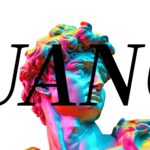Subnet 19
Nineteen
Rayon Labs
Nineteen leverages decentralized AI for efficient image generation and analysis using the DSIS framework

SN19 : Nineteen
| Subnet | Description | Category | Company |
|---|---|---|---|
| SN19 : Nineteen | Inference optimization | Generative Al | Rayon Labs |
Nineteen is a decentralized subnet dedicated to image generation and reasoning, utilizing the Distributed Scaled Inference Subnet (DSIS) framework to optimize the throughput of the Bittensor network. This setup allows them the flexibility to select their preferred technology stack for processing requests and generating responses. Validators handle incoming requests from the front end, distribute them to miners, and evaluate their performance, thereby streamlining the image generation process.
Nineteen is a cutting-edge AI project revolutionizing image processing, starting with Meta’s ‘Segment Anything’ model for tasks like recognition and object detection. They emphasize speed and efficiency, currently offering access to the best open source LLM’s, Image generation models (including those trained on datasets from subnet 19), and other miscellaneous models such as embedding models. They are rewarding miners for quick processing and promising rapid innovation, including real-time object detection. Aimed at transforming industries through advanced imagery analysis, Nineteen is driven by community input and a commitment to responsible AI development. This project represents a significant step forward in AI’s ability to interpret and interact with digital imagery.
The subnet offers various tools for image manipulation, including an engineering game and a prompt where users try to match AI-generated images. Nineteen’s initial focus was on image-related models, such as segmentation and clip-edding models, to enhance image search and manipulation capabilities on Corcel. The subnet later expanded its offerings to include image generation, resulting in hundreds of thousands of images being created weekly and the development of various applications like Pixit.
Miners
The integration of text models within Subnet 19 aims to provide additional value beyond leaderboard metrics. By updating the subnet’s code weekly, validators can access and run the latest text models, allowing users to generate images from various sources and models for diverse applications. This approach enables seamless utilization of both image and text models by miners, enhancing the capabilities and utility of Nineteen within the Bittensor ecosystem.
Nineteen optimizes network utilization by combining image and text tasks within the same subnet, eliminating the need for separate subnets. Miners perform tasks validated by the validators, ensuring correct execution and task completion criteria, which boosts efficiency and enhances the overall functionality of the network. The seamless integration of image and text tasks exemplifies Nineteen’s adaptability and commitment to addressing network needs effectively.
Trustworthiness is determined by comparing generated images to the desired output, focusing on prompt completion speed and correctness. The method involves comparing images generated by miners and rewarding those who complete the prompt accurately and quickly.
Determinism is a critical issue in ensuring that miners cannot cheat by predicting query outcomes before others. Miners having access to algorithms poses a challenge as they could gain an unfair advantage by making deterministic queries.
Validators
Validators act as gateways to the network by providing API keys and managing access for miners using HTTP requests. Organic scoring of queries incentivizes validators to maximize their bandwidth selling potential.
Validators are prioritized based on the percentage of delegation they hold, optimizing the miners’ solution to give query priorities based on validators’ delegation percentages. This mechanism incentivizes miners to prioritize validators who delegate more, creating a balanced system where validators can sell their bandwidth effectively. The aim is to enable users to extract value from the subnet, not just in cryptocurrency but also in real money. This structure is designed to support the transition from a phase where validators and miners work in isolation to a more open network. The goal is to create a system where arbitrary models can be run within the subnet structure, emphasizing flexibility in reward models.
Vision uniquely incorporates organic user queries from the front end into the validation process, enhancing fairness and effectiveness by evaluating miners on these queries. Validators are judged based on real user queries. When scaling to a million queries a day, the focus shifts to choosing which valid data to prioritize. The percentage of queries a validator is allowed is determined by dividing its stake by the total stake delegated to all validators on the subnet they are validated on. This strategy fosters decentralized access and prioritizes valid data based on stake percentage, aligning with game theory principles.
Validators are responsible for posting and storing images to maintain data integrity and prevent unauthorized additions to the dataset. Implementing unique protocols like signing messages with private keys enhances data security and builds trust in the system’s operation.
Leveraging Seed for Image Validation
Utilizing a seed allows for a close comparison of images generated by different hardware, ensuring consistency despite variations in processing speed. Methods like embeddings and image hashes are used to set thresholds for image similarity, preventing miners from exploiting partial completion. The seed determines the path through the model’s probabilities in generating text or images, but changing hardware can alter the seed and lead to diverse outcomes. Different GPU hardware can result in variations in output, necessitating careful monitoring and validation mechanisms to maintain consistency in generated content.
Challenges of Image Training Models
The absence of image training subnets is attributed to the complexity of human judgment in evaluating image quality, as fine-tuners often rely on visual assessment, a process challenging to replicate effectively in AI networks. The scale of image training, requiring extensive human input for evaluation, leads to concerns about ethical considerations and labor practices in large-scale image labeling operations.
Nineteen uses advanced models like Dream Shaper and Kinsky for image generation, aiming to cultivate a vast dataset by leveraging mid Journey and other open-source models to enhance AI capabilities. The strategy involves curating a comprehensive dataset to fine-tune base models iteratively, potentially leading to the development of superior AI models for widespread adoption.
The objective is to enhance the intelligence and performance of fixed-sized open-source models by incorporating insights from high-performing models like Midjourney, aiming to elevate the quality and functionality of AI models available for broader use. Embracing new state-of-the-art advancements, like Stable Diffusion 3, highlights a commitment to continuous advancement in enhancing AI model capabilities through optimized dataset utilization.
Utility and Features
Nineteen offers diverse tools like stable diffusion to enhance image manipulation, such as cropping and scribbling. It includes tools like inpainting for moving images, upscaling, and reimagining for transforming images drastically. Nineteen is designed in a decentralized manner, ensuring independence from Corel, allowing validators to create their Image Studio accessing subnet 19. Validators can run their API servers, interact with miners, and perform various tasks with complete decentralization.
By leveraging organic ideas from human inputs amid the validation process, Subnet 19 overcomes challenges and biases associated with solely generated content, offering a more reliable system.
Hardware and Model Sizes
Open-source models obtained from providers like Stability or closed-source APIs like Midjourney can be used to generate images. The data set is a compilation of multiple sources that can be leveraged to enhance the quality of open-source models. Users can feed the enhanced open-source models back into the ecosystem for widespread image generation.
Image generation models typically target around 24 gigabytes, making it accessible for most consumers. Text-based models require a larger capacity, approximately 80 gigabytes, for efficient operation. Future models like the St. Defusion 3 are expected to range between 800 million to 8 billion parameters, still falling short of the 70 billion mark seen in text models.
Namoray is one of the premier developers on Bittensor and is the mind behind Nineteen. Other team members include:
Marcus Graichen – Co-Founder
Akinwunmi Aguda – Frontend Developer
Arpan Tripathi – AI Engineer
Nicholas Bateman – Lead AI Engineer
Christopher Subia-Waud – Lead Machine Learning Engineer
Charlotte Hare – Recruitment



